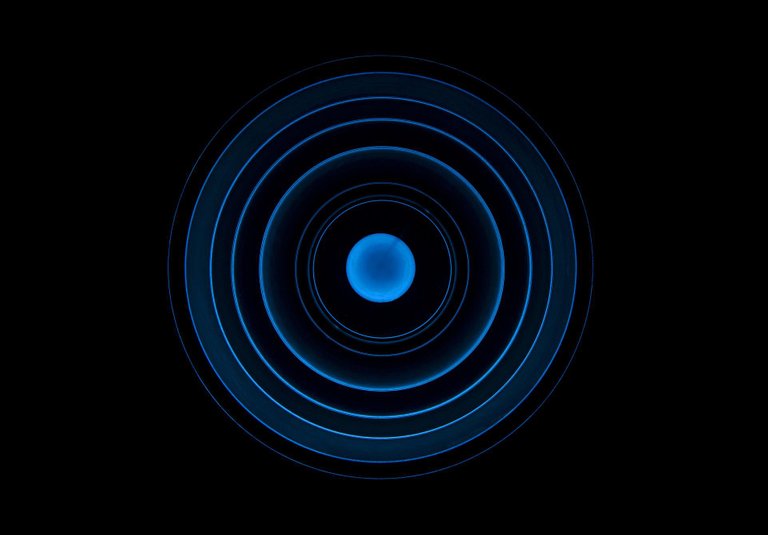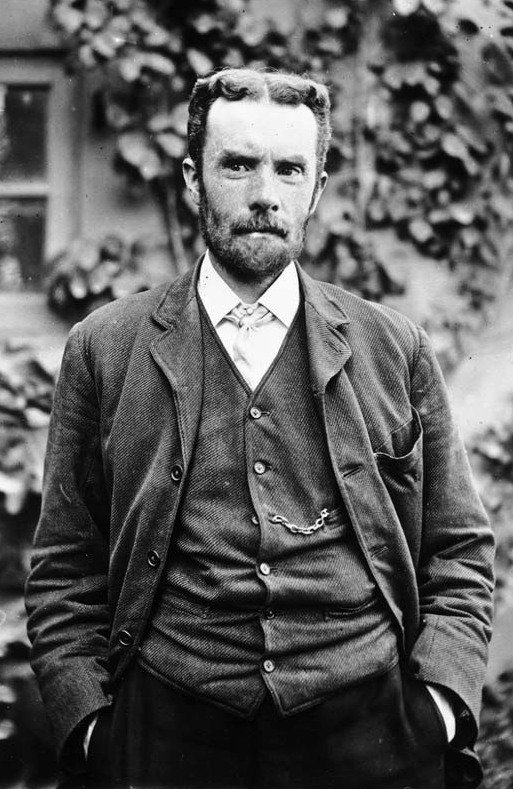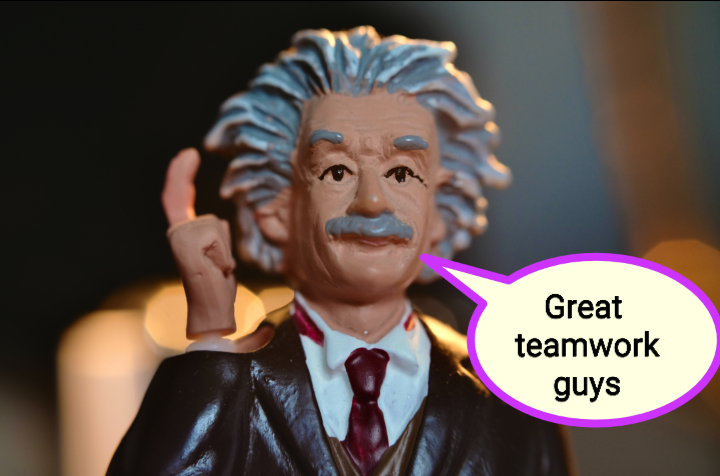A Brief And Untold History Of Gravitational Waves
Some of us, if not most must be familiar with the concept of waves. There are a lot of wave phenomena around us even though we may not be familiar with the technical concept(s). Just to name a few, visible light from your torch/lamp is under what is called the "electromagnetic waves" , sound moves from it's source of origin to our ears through sound waves, when you touch the surface of water or drop an object from a height to fall on the surface of the water, we normally see some weird patterns of concentric circles moving from the point where the object lands and spreads throughout the surface of the water (like those in the image below). Those patterns are ripples in the surface of the water that are caused by water waves.
However, there appears to be another kind of wave most of us may not be familiar with and it's none other than the gravitational wave. According to general relativity, this are ripples in the curvature of spacetime that propagates as waves at the speed of light and they are caused by accelerated masses. From a layman's perspective, we should expect spacetime to have a pattern like those in the image shown previously (above) or that of water when the gravitational wave propagates but that is not how it actually is, it is kinda more complicated than those familiar ones. You can see the part of the references on gravitational waves to see how it is depicted.
Such waves (gravitational) are always around us just like the electromagnetic waves but they are too weak for us to observe. To get noticeable effects, we would need simply, very dense objects with mass of the order of solar masses and are accelerating very quickly. In nature, examples of such object are black holes and neutron stars. Unfortunately, such objects are very far away from us that the gravitational waves they generate are still very weak to be observed and it requires very sophisticated and sensitive equipments to detect them. Detectors of the gravitational waves such as LIGO can be found in astronomical observatories.
We initially defined the gravitational waves based on the current successful theory of classical gravity - general relativity, this theory which took a very long time for Einstein to develop wasn't the only theory of gravity to predict the existence of such wave. One may think that Einstein was the first to predict the existence of such a wave due to the success of his theory but looking back into history suggests that he wasn't the first. Gravitational waves had been predicted a long time ago and were still being predicted before the inception of Einstein's theory of general relativity. One important thing to note is that virtually any relativistic theory of gravity predicts the existence of gravitational waves. Physicists had already started working on relativistic theories of gravity before Einstein.
Perhaps, the earliest person to ponder about the existence of gravitational waves was actually James Clerk Maxwell in 1865 - the guy associated with the Maxwell's equations (equations for the classical theory of electromagnetism) and also the first person to predict that light was an electromagnetic wave. In his words and i quote
After tracing to the action of the surrounding medium both the magnetic and the electric attractions and repulsions [oscillations]…we are naturally led to inquire whether the attraction of gravitation, which follows the same law of the distance, is not also traceable to the action of a surrounding medium.
However, he never developed a theory of gravity that predicted such a wave, he seemed to have had difficulties trying to understand gravity from the perspective of electromagnetism.
In 1893 a very talented English electric engineer and school dropout Oliver Heaviside managed to develop equations of gravity that were analogous to Maxwell's equations and he predicted the existence of gravitational waves. This however was after he had simplified Maxwell's original equations. The equations of classical electromagnetism that are used today and still referred to as Maxwell's equations (4 equations in number) are actually due to Heaviside. Maxwell's original equations were 20 in number (to be solved simultaneously) and were too cumbersome and difficult for physicists and electrical engineers to use as at the time. Heaviside would simplify the original equations with the help of vector analysis that he himself first discovered and developed.
Maxwell's equations on the other hand is compatible with special relativity, as a matter of fact, Maxwell's equations is inherently a relativistic theory. So therefore, the equations of gravity developed by Heaviside in Maxwell's format can be to some extent considered a relativistic theory of gravity and it's why Heaviside was able to predict the existence of gravitational waves.
Unfortunately, nobody took this prediction seriously until much later with the debut of special relativity. It is interesting to note that Einstein wasn't the first to publish the theory of special relativity, it was the French polymath Henri Poincaré that first did (in 1905). Einstein was given the credit because he based it on two very important principles that were missing in Poincaré's papers. Poincaré was more of a mathematician, in fact, from the perspective of physics, he was more of a mathematical physicist while Einstein was more of a theoretical physicist. This could explain why those principles were missing in his paper. Mathematically, both his and Einstein's were identical. In the paper Poincaré published his theory of special relativity, he discussed about extending special relativity to include gravity and in doing so predicted the existence of gravitational waves but not in a rigorous manner.
Later, after Einstein had published his own theory of special relativity (in 1907), he also thought of extending it to also include gravity but realized it couldn't be done consistently, this was due to one principle - the equivalence principle. It would then take Einstein 8 years to find such a theory. However, while Einstein was still figuring out his own theory of gravity, other physicists were busy producing relativistic theories of gravity at a quick pace but theirs was just extending special relativity to include gravity. In one of Einstein's earlier attempts he proposed the idea of the speed of light not necessarily being a constant in vacuum but varied when in the presence of a gravitational field, a term now referred to as "the variable speed of light". This idea which Einstein later rejected would inspire another physicist to develop his own theory of relativistic gravity, this physicist was none other than Max Abraham. Abraham's theory made use the variable speed of light and it predicted the existence of gravitational waves. One of the problems with his theory was that it predicted the gravitational waves to be longitudinal but we know today that it's actually transverse. However, as at the time, his theory was a competitor to Einstein's theory of general relativity - Einstein had proposed different versions of general relativity before arriving at the correct one in 1915. One reason why you may not often hear of Max Abraham in the history of the development of the relativistic theory of gravity is that he was a prominent critic of Einstein's theories of relativity, they both clashed on several occasions in their journey of discovering a correct theory of relativistic gravity.
The clashes between Einstein and Abraham unknowingly to them inspired another physicist to develop his own relativistic theory of gravity, he was a young Finnish physicist as at the time and he was none other than Gunnar Nordström. Wait a minute, does that name look familiar ?
Oh yes, i remember now. In our previous article we discussed about him, his work on unification of all fundamental forces inspired the modern approaches of also unifying all fundamental forces (especially with the addition of extra dimensions of spacetime).
Previous relativistic theories of gravity were actually inconsistent but that of Nordström was the first consistent relativistic theory of gravity, his ideas closely resembled that of Einstein's (including the equivalence principle) and as a matter of fact, the idea of matter causing spacetime to curve (gravity) was first shown in Nordström's theory, not Einstein's. Even when Einstein was struggling to develop his own theory he had to borrow ideas from Nordström's theory and at some point he (Einstein) supported Nordström's theory. Nordström's theory too predicted the existence of gravitational waves (transverse) but he never discussed about it, the reason why he never did is still speculative. Unfortunately, Nordström's theory couldn't accurately account for the perihelion precession of Mercury - a major problem troubling physicists as at the time.
Finally, after years of struggle and collaborations, Einstein finally arrived at a correct relativistic theory of gravity - general relativity. This theory would eventually account for the perihelion precession of Mercury and predict other interesting stuffs that would later be confirmed by experiment. His theory did predict the existence of gravitational waves and he discussed about it on several occasions but he made the same mistake previous physicists made - they usually dismissed it's existence despite their their theories predicting it. In Einstein's case, this was in part due to his mathematical ignorance and stubbornness, he didn't quite Know how to handle the mathematics of general relativity well and till he died he never believed in the existence of such wave even after he had been corrected (mathematically).
The task was then left for the later generations to continue. The existence of the gravitational waves was later established rigorously theoretically using Einstein's equations and methods. Later, about 60 years after the hard work of the later generations, the gravitational wave was observed for the first time (in 2015) and the discoverers were awarded the 2017 Nobel prize in physics. In the same 2017, the properties of this wave as predicted by general relativity were confirmed observationally.
But the story wouldn't end there, as research is still ongoing, especially with regards to applications (astronomical) and so therefore we may be expecting more stories that would be part of the history that would be told by future generations.
It's here we conclude this article, have a thoughtful day and see you next time.
For further reading
The Secret History of Gravitational Waves
Thank you all once again for stopping by to read my jargons and also thank you @juecoree, @lemouth and the @Steemstem team for your valuable supports.
Lastly, please don't forget to do the needful
Upvote
Comment
Reblog
If you enjoyed my jargons.




Congratulations @clinton19! You have completed the following achievement on the Hive blockchain and have been rewarded with new badge(s):
Your next target is to reach 60 posts.
You can view your badges on your board and compare yourself to others in the Ranking
If you no longer want to receive notifications, reply to this comment with the word
STOPTo support your work, I also upvoted your post!
Support the HiveBuzz project. Vote for our proposal!
I heard the news when these gravitational waves were first detected. Fascinating stuff, even though we can't feel their effects in our daily lives.
Thanks for your contribution to the STEMsocial community. Feel free to join us on discord to get to know the rest of us!
Please consider delegating to the @stemsocial account (85% of the curation rewards are returned).
You may also include @stemsocial as a beneficiary of the rewards of this post to get a stronger support.